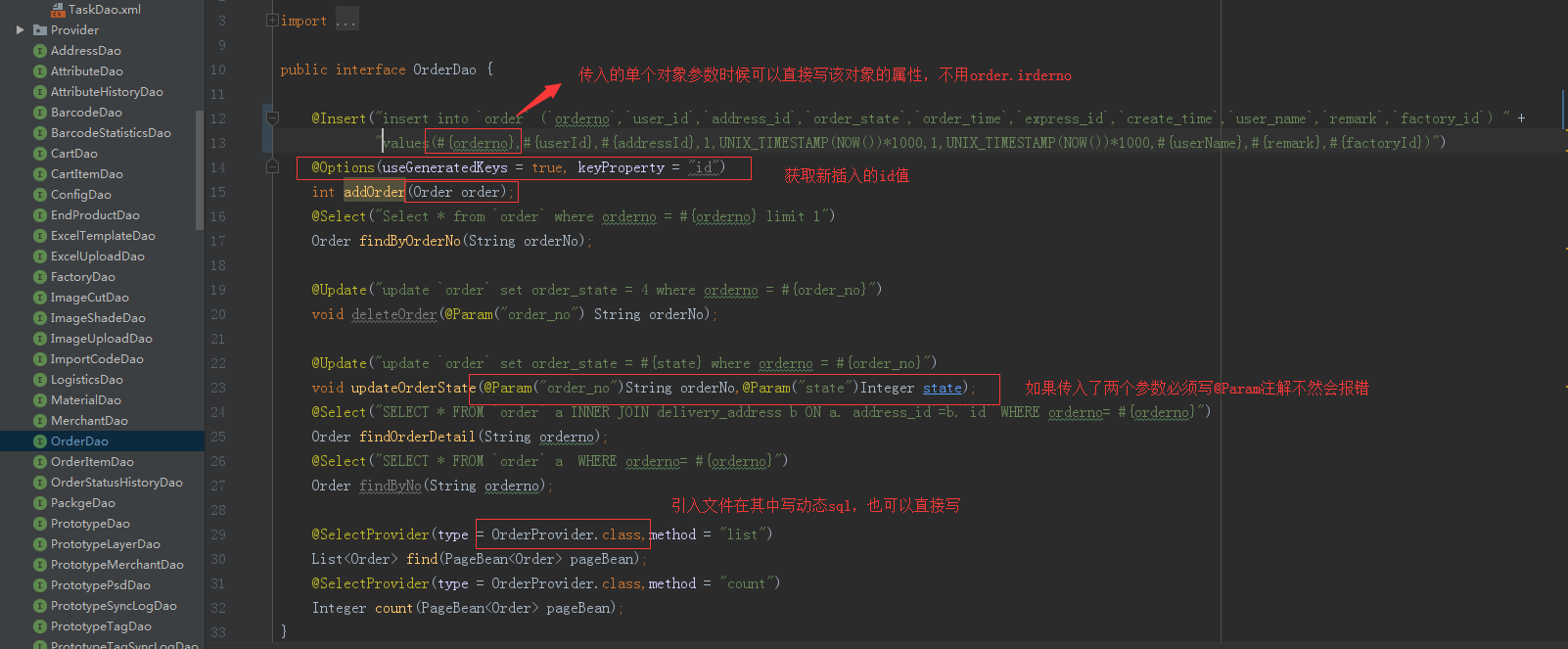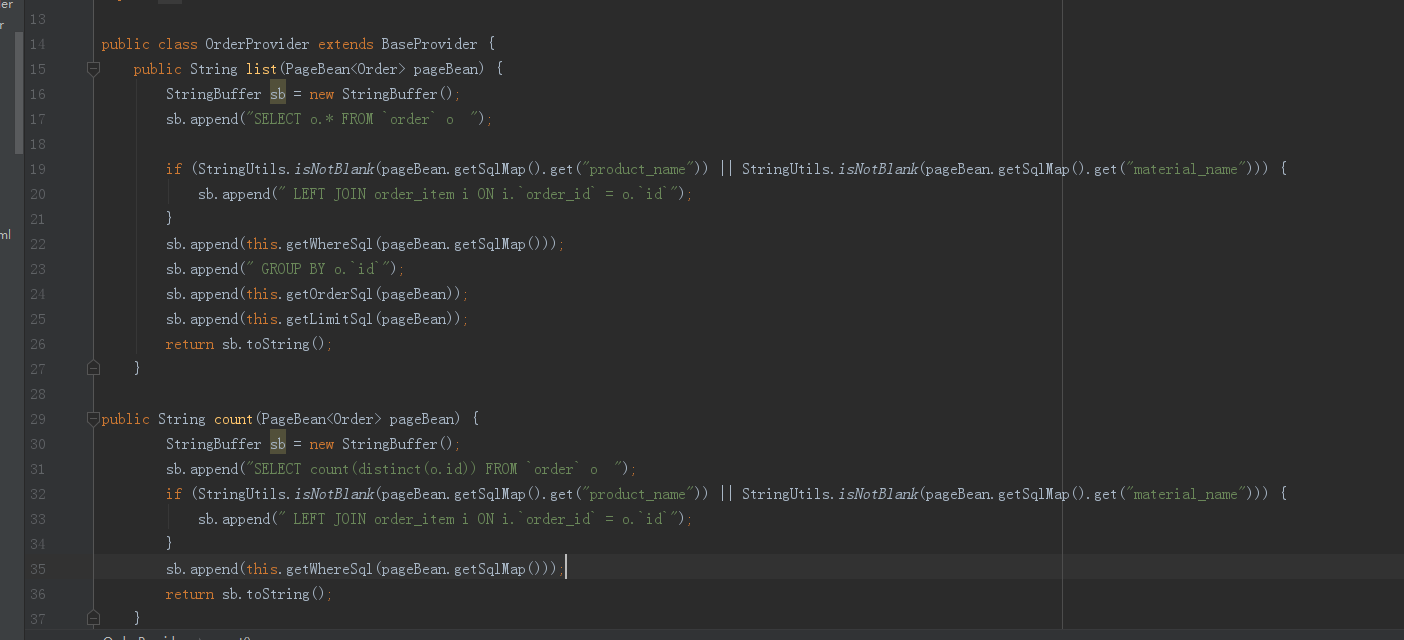1以注解方式

//两个参数其中一个是对象需写,对象.属性
@Update("update delivery_address set consignee = #{address.consignee},country = #{address.country},city = #{address.city},address = #{address.address},phone_number = #{address.phoneNumber},telnumber = #{address.telNumber},zipcode = #{address.zipcode},update_time = UNIX_TIMESTAMP(NOW())*1000 where id = #{id}")
void update(@Param("address") Address address, @Param("id") Long id);
OrderProvider.class

另外一种写法
@Select("<script>" +
"SELECT COUNT(*) FROM excel_template " +
" where create_uid = ${sqlMap.create_uid} and is_delete = 0 " +
"<if test="sqlMap.end_time != null and sqlMap.end_time != '' "> and UNIX_TIMESTAMP(create_date) ${sqlMap.end_time} </if>" +
"<if test="sqlMap.start_time != null and sqlMap.start_time != ''"> and UNIX_TIMESTAMP(create_date) >= ${sqlMap.start_time} </if>" +
"<if test="sqlMap.keyword != null and sqlMap.keyword != ''"> and (file_name like CONCAT('%',#{sqlMap.keyword},'%') )</if>" +
"</script>")
int countList(PageBean<ExcelTemplate> pageBean);
在上一篇中提到查询中in()语句用foreach查询
现在用另外一种方式自定义注解方式
public List<TaskChildFinished> findListByIds(String ids) { List<Long> idList = StringUtils.stringToLongList(ids); List<TaskChildFinished> taskChildFinisheds = endProductDao.findListByIds(idList); return this.format(taskChildFinisheds); }
public static List<Long> stringToLongList(String string){ return Arrays.asList(string.split(",")).stream().map(s -> Long.parseLong(s.trim())).collect(Collectors.toList()); }
@Select("select * from task_child_finished where id in (#{idList})")
@Lang(SimpleSelectInLangDriver.class)
List<TaskChildFinished> findListByIds(@Param("idList")List<Long> ids);
public class SimpleSelectInLangDriver extends XMLLanguageDriver implements LanguageDriver { private static final Pattern inPattern = Pattern.compile("\(#\{(\w+)\}\)"); @Override public SqlSource createSqlSource(Configuration configuration, String script, Class<?> parameterType) { Matcher matcher = inPattern.matcher(script); if (matcher.find()) { script = matcher.replaceAll("<foreach collection="$1" item="_item" open="(" " + "separator="," close=")" >#{_item}</foreach>"); } script = "<script>" + script + "</script>"; return super.createSqlSource(configuration, script, parameterType); } }